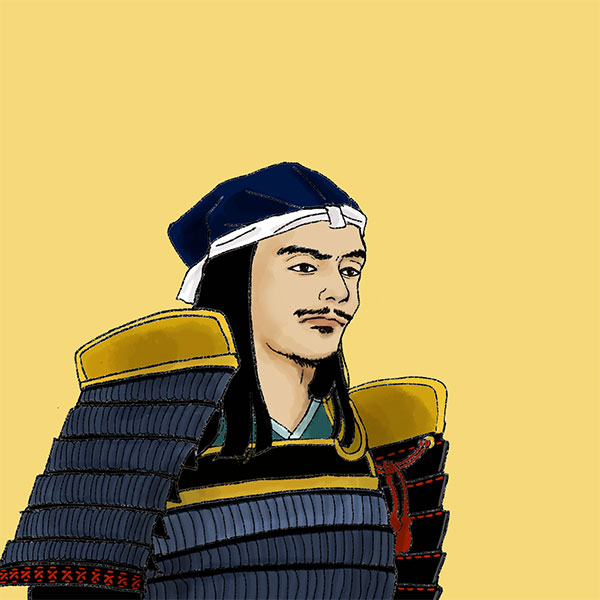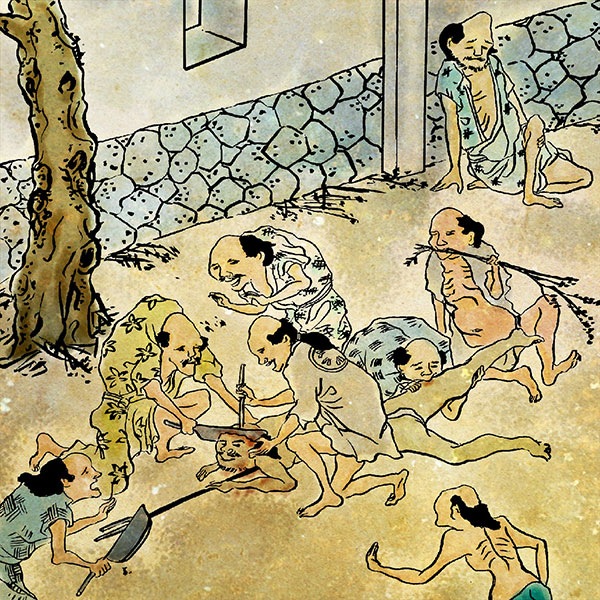Yoshikawa Tsuneie (2/2)The samurai who was mourned as a "pathetic loyalist"

Yoshikawa Tsuneie
- Article category
- biography
- name
- Tsuneie Yoshikawa (1547-1581)
- place of birth
- Tottori prefecture
- Related castles

Tottori Castle
- related incident
Yamagata Nagashige entered Tottori Castle with Yoshikawa Tsuneie. He was also present as a page when Tsuneie committed suicide. When Tottori Castle fell, Yamagata Nagashige returned to Aki Province. When the Sengoku period ended and both the Mori clan and the Aki Yoshikawa clan were transferred to Suo Province, Yamagata Nagashige followed them and continued to serve the Yoshikawa clan. In his later years, Yamagata Nagashige left behind "Yamagata Nagashige's Memorandum" addressed to Yoshikawa Masazane, the grandson of Yoshikawa Tsuneie. Much of this is about the siege at Tottori Castle, and also includes information about Yoshikawa Tsuneie's suicide. This remains to this day, and is the reason why the story of the unrecorded moment of suicide has been passed down to this day.
In addition, three of the five letters left by Tsuneie Yoshikawa remain, and we can see his own feelings. One of the three letters was addressed to Hiroie Yoshikawa, the third son of Motoharu Yoshikawa, who was the head of the family. In it, he wrote, "I consider it an honor for all generations to be able to commit seppuku at the border between the two archery battles of Japan, where the Mori and Oda clans clashed."
Another letter was addressed to his retainers, instructing them not to raise any objections because he would be the only one to be sacrificed.
The last remaining message is addressed to his children, and reads, "In Tottori, we held out night and day for 200 days, but our supplies ran out. Then one of us stepped up to help, helped everyone, and earned the name of the Yoshikawa clan. I want you to hear this happy story."
Yoshikawa Tsuneie also made up his mind and we can see his determination to fulfill his responsibilities as the representative of the castle soldiers.
Early in the morning on October 25, 1581, Yoshikawa Tsuneie exchanged sake cups with his retainers and then sat down on his armor. He then committed seppuku, saying, "I haven't even had the chance to practice my sword technique, so I'll try to cut in an uncoordinated way." His retainer, Shizuma Genbei, performed the beheading. His last words were, "The Azusa bow passed down by the samurai will be the home of the frog."
The fallen head was sent to Hashiba Hideyoshi as proof of the surrender of the castle. It is said that when Hideyoshi saw Tsunezane's head, he cried like a man, saying, "What a pitiful samurai." Tsuneie's head was then sent to Oda Nobunaga in Azuchi Castle and buried with great respect.
After his death, Tsuneie Yoshikawa was buried in a tomb built inside the castle, and during the Edo period, it was moved to Engo-ji Temple in Gotanda outside the castle. During the Sengoku period, there were many large battles, but there were also many small battles, such as the siege of Tottori Castle. During that battle, Tsuneie Yoshikawa fulfilled his responsibility by sacrificing himself to save the lives of all the castle soldiers.
Descendants of Tsuneie Yoshikawa and later
After Tsuneie Kikkawa died, his eldest son Tsunezane Kikkawa inherited the Iwami Kikkawa family. After the Battle of Sekigahara, when the Mori family was transferred, Tsunezane Kikkawa followed him. He then served Hiroie Kikkawa (the Aki Kikkawa family, the Iwakuni Kikkawa family in the Edo period), who was the head of the family, and continued to serve him until the Meiji period.
The eldest son of Yoshikawa Tsuneie (Tsunezane) served the Mori family, but the third son, Ieyoshi, served the Ikeda family of the Tottori domain during the Edo period. One of the descendants of Yoshikawa Ieyoshi, who served the Ikeda family, is the rakugo performer Sanyutei Enraku V (real name: Yoshikawa Kankai, master of Sanyutei Enraku VI (Rakutaro)). Through this connection, Sanyutei Enraku V became one of the models for the bronze statue of Yoshikawa Tsuneie at Tottori Castle.
Tottori Castle and the statue of Yoshikawa Tsuneie
Tottori Castle was a castle located in Tottori City, Tottori Prefecture. It was built on top of Mount Hisamatsu in the middle of the Sengoku period, and is therefore also known as Hisamatsu Castle or Hisamatsuyama Castle. During the Sengoku period, it was a battleground between the Yamana, Takeda, Amago and Mori clans, and after it was captured by Hashiba Hideyoshi, it came under the control of the Oda and Toyotomi clans. As the Azuchi-Momoyama period ended and the Edo period began, it came under the control of the Ikeda clan of Tottori Domain and ushered in the Meiji period. Today, only the castle tower base, stone walls, moats and wells remain, and as it has been renovated after each natural disaster, it is also known as a "castle museum" where you can see the castle's form from each era.
Tottori Castle was also the site of the battle between Ikeda Tsuneie and Hashiba Hideyoshi. Because of this connection, Tottori City decided to erect a bronze statue of Yoshikawa Tsuneie in 1993. However, there is no portrait of Yoshikawa Tsuneie, so his appearance is unknown. So an illustrator drew his face using Tsuneie's descendants as a reference, and a sculptor created the statue based on that. One of the descendants who served as the model was San'yutei Enraku 5 (real name Yoshikawa Hiromi).
When Enraku 5 visited Tottori, the head of the local library told him that in the Hankanpu, a samurai who was Enraku's great-grandfather committed seppuku. This samurai was a descendant of Ieyoshi, the third son of Tsuneie Yoshikawa. A 7-year-old boy (Enraku's grandfather, Kanga) who was present at the samurai's seppuku became obsessed with the miserable samurai life and that he would not be able to take over the family business, and became a monk at Zojoji Temple in Edo. When the Meiji era began, Kanga changed his surname from "Kikawa" to "Yoshikawa". It is said that because of this connection, San'yutei Enraku 5 became one of the models for the descendants of Tsuneie Yoshikawa.
Tottori 320,000 Koku Castle Festival
Tottori Castle, the site of the siege.
During the Edo period, the Ikeda family became the feudal lord of Tottori Castle, a feudal lord that continued until the Meiji period. Every autumn in Tottori prefecture, where the castle is located, the "Tottori 320,000 Koku Castle Festival," one of the three major festivals of Tottori Ikeda, is held. The festival starts with a period procession of lords, princesses, and samurai, including Ikeda Mitsunaka, the first lord of the Inaba Tottori domain, followed by stage performances and a matchlock gun demonstration by the "Bizen Okayama Castle Rifle Corps" (Bizen Okayama Domain and Inaba Tottori Domain were both territories of the Ikeda family, and have a deep relationship, with the domains switching places due to transfers). Some years, the festival includes plays related to Yoshikawa Tsuneie, the castle lord before the Edo period.
This festival takes place at Tottori Castle and Hisamatsu Park, allowing you to enjoy autumn while learning about local history.
In addition, every November, a kendo tournament called the "Tottori City Kendo Tournament and Yoshikawa Tsuneie Festival Kendo Tournament" is held. This is the oldest kendo tournament in Tottori Prefecture, and you can still see traces of Yoshikawa Tsuneie in Tottori Prefecture today.
Fukumitsu Castle and Fugon Castle Festival
Fukumitsu Castle (also known as Mononobe Castle or Monoiwazujo) was a mountain castle located in Fukumitsu, Yunotsu-cho, Oda City, Shimane Prefecture. In 1559, when Yoshikawa Tsuneyasu was given the land of Fukumitsu by the Mori clan, he renovated Fukumitsu Castle. It became the base of the Yoshikawa clan, and Yoshikawa Tsuneie was raised in the castle.
In 1600, after the Battle of Sekigahara, the Mori clan was transferred to Choshu, and the Yoshikawa clan followed suit, and Fukumitsu Castle was abandoned.
Although only castle ruins remain today, the "Fugon Castle Festival" is held every October in memory of the Yoshikawa family of the past. After registering at a local temple, you can enjoy the autumn weather with a historical lecture on the Mori and Yoshikawa families, a hiking trip to the site of Fukumitsu Castle, and lunch.
Rereading the article on Yoshikawa Tsuneie
- related incident

- WriterTomoyo Hazuki(Writer)I have loved history and geography since my student days, and have enjoyed visiting historical sites, temples and shrines, and researching ancient documents. He is especially strong in medieval Japanese history and European history in world history, and has read a wide range of things, including primary sources and historical entertainment novels. There are so many favorite military commanders and castles that I can't name them, but I especially like Hisashi Matsunaga and Mitsuhide Akechi, and when it comes to castles, I like Hikone Castle and Fushimi Castle. Once you start talking about the lives of warlords and the history of castles, there's a side of you that can't stop talking about them.




